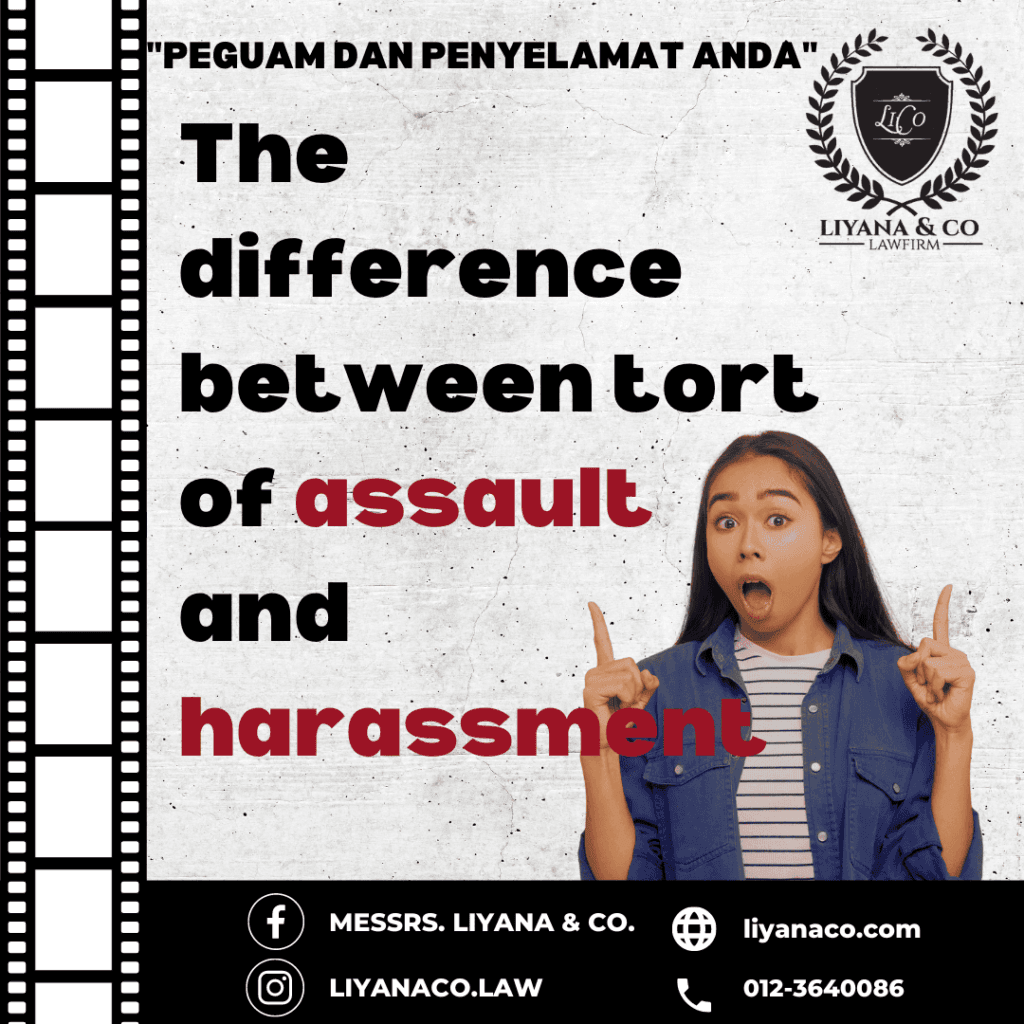
The tort of harassment and the tort of sexual harassment are related legal concepts that involve harmful behavior directed at an individual.
Tort of Harassment and Sexual Harassment:
Both torts involve unwanted and distressing behaviour aimed at causing harm or emotional suffering to another person.
The tort of harassment encompasses a wide range of intrusive and distressing actions, which may be repetitive or persistent, and is not limited to sexual content.
In contrast, the tort of sexual harassment is a specific subset of harassment that centers on unwelcome sexual behavior. This includes actions, comments, or advances of a sexual nature that create a hostile or intimidating environment for the victim.
Victims of both forms of harassment often suffer emotional or psychological harm as a result of the behaviour.
Elements of tort
There are 4 elements that need to be established:
The defendant has engaged in repeated communications, threats, insults, stalking, or other harassing behaviours in person or through other means;
That they knew or ought to have known was unwelcome;
Which impugn the dignity of the plaintiff, would cause a reasonable person to fear for their safety or the safety of their loved ones, or could foreseeable cause emotional distress; and caused harm.
Question: boss keep calling me baby
Question: I am an employee at a leading firm in Kuala Lumpur. I often receive calls that make me feel uncomfortable and disturbed at workplace by my boss, among them “sayang, baby, honey”. What are my rights?
Answer: If the matter does not give you comfort and causes you to be mentally affected and have difficulty going to work, this matter can be considered as sexual harassment. This harassment must occur more than once. Sexual harassment can happen not only through physical touch but also through expression.
Through the Public Service Commission’s April 2023 circular, it has been established that acts such as calling someone with words such as “dear, sayang” are sexual harassment.
Case
In a legal case in Malaysia, a woman (the Respondent) accused her superior (the Appellant) of sexual harassment while they were both employees of a company. The company conducted an inquiry and reprimanded the Appellant. Displeased with the accusation’s impact on his employment, the Appellant sued the Respondent in the High Court, seeking a declaration of innocence and alleging defamation. The Respondent counterclaimed for damages due to sexual harassment.
The High Court found in favor of the Respondent, ruling that sexual harassment had occurred, and awarded her damages. The Court of Appeal upheld this decision, even though the cause of action was not clearly defined. The Appellant appealed to the Federal Court, asking whether a valid cause of action for civil claims related to sexual harassment existed in Malaysia.
The Federal Court considered existing laws, a non-binding code of practice on sexual harassment, and recent amendments to employment laws. They decided to introduce the tort of harassment into Malaysian law, encompassing sexual harassment. They defined sexual harassment as unwelcome, offensive, or threatening behavior of a sexual nature occurring in the workplace.
The Federal Court disagreed with the Court of Appeal’s use of the tort of intentionally causing nervous shock, as it required proof of physical harm. They emphasized the need for the newly introduced tort of sexual harassment.
The Federal Court also clarified several related issues, including the absence of a strict requirement for corroboration in sexual harassment cases, the adequacy of the pleadings, and the entitlement to damages. They concluded that the Respondent deserved general and aggravated damages for the proven sexual harassment.
Ultimately, the Federal Court refrained from answering the initial question and dismissed the Appellant’s appeal. They stressed the seriousness of sexual harassment, its detrimental effects on victims, and the need for legal remedies to create a safer working environment in Malaysia.
This decision marks a significant change in Malaysian law, introducing a civil remedy for victims of sexual harassment and sending a strong message against workplace harassment.
Assault vs Harassment
The tort of assault and the tort of harassment are distinct legal concepts. Assault pertains to intentional threats of physical harm or the creation of reasonable fear of immediate harm, regardless of physical contact. Harassment, on the other hand, is broader and involves a pattern of unwanted and distressing behaviour, including repeated communications, insults, stalking, or intrusive actions, which may or may not include physical threats.
While assault focuses on physical harm or the threat thereof, harassment encompasses a range of behaviours that impugn dignity, cause emotional distress, or create a hostile environment. Harassment typically involves a series of actions over time. Both torts aim to provide legal remedies for harm but address different types of harmful behaviour and harm.
Do you need answers and solutions in a legal action? Get legal advice from our lawyers at Liyana & Co.
Our lawyers have 10 years of experience in solving complex legal problems.
“Your Legal Savior”
📞📱 Let’s set an appointment and contact us at: